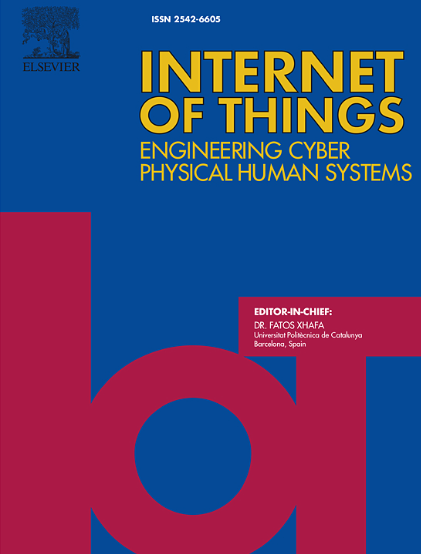Computation and transmission adaptive semantic communication for reliability-guarantee image reconstruction in IoT
IF 7.6
3区 计算机科学
Q1 COMPUTER SCIENCE, INFORMATION SYSTEMS
引用次数: 0
Abstract
Semantic communication can significantly compress source data, improving transmission efficiency. However, semantic communication systems under varying channel condition have not been well studied, especially for tasks that require reliability guarantee. This paper focus on the reliability-guarantee image reconstruction tasks, and study the computation and transmission adaptive semantic communication. First, a computation and transmission adaptive semantic communication (CTASC) system is proposed. It is able to adjust the computation load and transmission load of an image reconstruction task adaptively while guaranteeing the reconstruction reliability. Specifically, a semantic encoder with multiple convolutional neural network (CNN) slices with different network depths is designed to adjust the transmission load and computation load. Second, a joint computation and transmission resource allocation problem aimed at minimizing the maximum delay within system is formulated. To solve this problem, we decompose it into two nested sub-problems and propose a Simulated Annealing with Re-perturbation Mechanism (SA-RPM) algorithm and an Alternating Optimization (AO) algorithm to solve these sub-problems, respectively. Simulation results demonstrate that compared to variable code length enabled DeepJSCC (DeepJSCC-V), our system can achieve higher compression ratio(CR) with similar LPIPS performance. Simulation results also show that our resource allocation scheme can obtain an approaching value to the optimal maximum delay, with an average difference not exceeding 0.2%.
用于物联网图像重建可靠性保障的计算与传输自适应语义通信
语义通信可以大大压缩源数据,提高传输效率。然而,对于不同信道条件下的语义通信系统,尤其是需要可靠性保证的任务,研究还不够深入。本文将重点放在可靠性保证的图像重建任务上,研究计算与传输自适应语义通信。首先,本文提出了一种计算与传输自适应语义通信(CTASC)系统。它能在保证重建可靠性的同时,自适应地调整图像重建任务的计算负载和传输负载。具体来说,设计了一个具有多个不同网络深度的卷积神经网络(CNN)切片的语义编码器,以调整传输负载和计算负载。其次,我们提出了一个联合计算和传输资源分配问题,旨在使系统内的最大延迟最小化。为了解决这个问题,我们将其分解为两个嵌套子问题,并分别提出了模拟退火与再扰动机制(SA-RPM)算法和交替优化(AO)算法来解决这些子问题。仿真结果表明,与支持可变代码长度的 DeepJSCC(DeepJSCC-V)相比,我们的系统可以在类似 LPIPS 性能的情况下实现更高的压缩率(CR)。仿真结果还表明,我们的资源分配方案可以获得接近最优最大延迟的值,平均差异不超过 0.2%。
本文章由计算机程序翻译,如有差异,请以英文原文为准。
求助全文
约1分钟内获得全文
求助全文
来源期刊

Internet of Things
Multiple-
CiteScore
3.60
自引率
5.10%
发文量
115
审稿时长
37 days
期刊介绍:
Internet of Things; Engineering Cyber Physical Human Systems is a comprehensive journal encouraging cross collaboration between researchers, engineers and practitioners in the field of IoT & Cyber Physical Human Systems. The journal offers a unique platform to exchange scientific information on the entire breadth of technology, science, and societal applications of the IoT.
The journal will place a high priority on timely publication, and provide a home for high quality.
Furthermore, IOT is interested in publishing topical Special Issues on any aspect of IOT.
 求助内容:
求助内容: 应助结果提醒方式:
应助结果提醒方式:


